Have you ever wanted to rate or review Tudor Oaks? Now you can! We would enjoy hearing about your wonderful experiences with Tudor Oaks. Visit our website today to submit your review!




Have you ever wanted to rate or review Tudor Oaks? Now you can! We would enjoy hearing about your wonderful experiences with Tudor Oaks. Visit our website today to submit your review!




When the Great Depression hit the Midwest in 1929, it had a drastic impact on not only working and economic conditions, but family life as well. The origins of Thorne Crest’s parent company, American Baptist Homes of the Midwest, emerged from the hardships of this period.
The elderly population was hit particularly hard by the challenges of the Great Depression. Those who were close to retirement or had already retired watched a lifetime of savings disappear before their eyes. Many weren’t capable of returning to work, or were unable to find jobs that would allow them to rebuild their lost savings.
As a result, many elderly people became dependent on their families for shelter and care. Unfortunately, young families were facing their own struggles. There were seldom enough resources
for them to adequately provide for their own children, let alone their parents.
In 1930, a small group of Baptist gentlemen living in Minnesota and Iowa recognized the serious need to provide shelter and care for the elderly population of the Midwest.
These five gentlemen decided to take action and formed a not-for-profit organization they called the Northwest Baptist Home Society. The original mission of the Northwest Baptist Home Society was “to provide Christian homes for aged and dependent men and women, and to provide for their physical and spiritual comfort.”
The five founders did not wait long to involve others in their efforts to relieve the suffering they saw in their communities. To expand their initiative, they joined with the Northern Baptist Convention of Minnesota, Iowa, Nebraska, North Dakota, and South Dakota. Baptist congregations in these states helped to support the Society’s early efforts.

The first ABHM community opened its doors on
ABHM’s first location in Winnebago, MN, the Winnebago Old People’s Home, was originally a dormitory at now-defunct Parker College. The community was later renamed Parker Oaks Retirement Community.
August 29, 1931. It was housed in a former men’s dormitory belonging to Parker College (a nowdefunct Baptist school) in Winnebago, MN, that had sat vacant for many years before being given to the Society and converted into a residence for seniors. The community was originally named the “Winnebago Old People’s Home” and later renamed Parker Oaks Retirement Community.
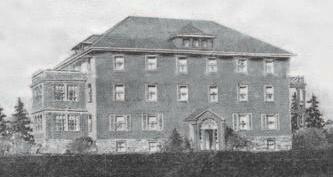
In the following 18 years, the Society’s mission and footprint grew as they opened seven additional “Old People’s Homes” in Minnesota, Iowa, and Nebraska. Meanwhile, another Baptist association for the elderly was growing in Colorado, called the Baptist Home Association of the Rocky Mountains, (BHA).
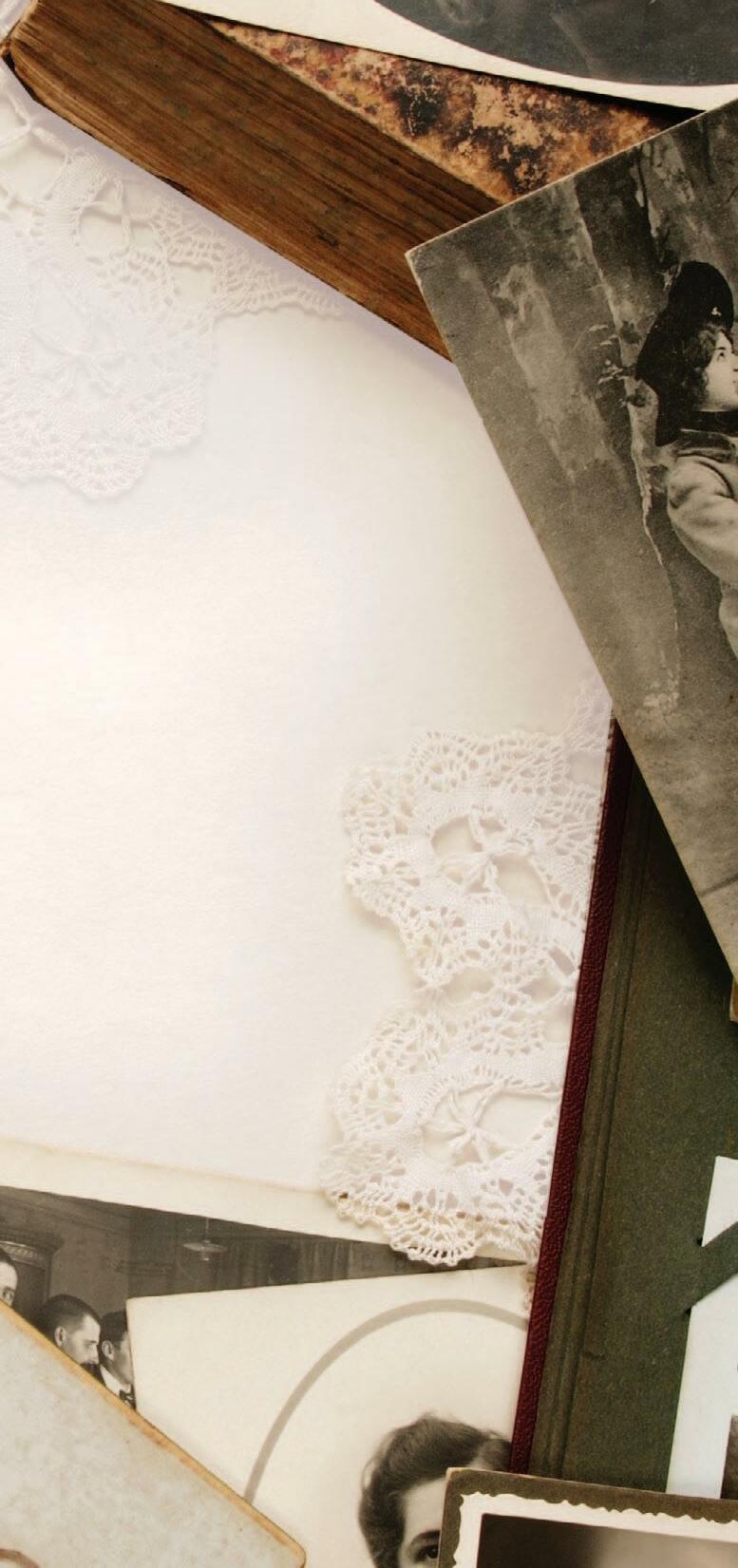

BHA was chartered in Denver in 1949 with the mission to provide “facilities for care, comfort, health, recreation, and general welfare of aged people.” In 1994, the two organizations joined forces to continue a joint mission to serve those in need under the ABHM banner.
The ABHM mission has evolved over time, but remains true to the original values of our founders. Dave Zwickey, ABHM President and CEO states, “Our mission today is to create healthy Christian communities that empower older adults, families, and people with disabilities. We provide choices for housing, services, and technology that enrich body, mind, and spirit.”
In the past several years, ABHM has expanded the services offered at a number of locations across the Midwest. Our communities provide a full continuum of senior living and healthcare services that include skilled nursing, rehab care, assisted living, independent living, and memory care, along with housing and programs for the developmentally disabled and subsidized housing for seniors and families. Our communities are located in Colorado, Iowa, Minnesota, Nebraska, South Dakota, and Wisconsin.





In his 18 years with American Baptist Homes of the Midwest (ABHM), IT Director Roger Hennen has seen technology transform the lives of residents, as well as the way ABHM communities manage and deliver care. This transformation follows a trend across the senior living industry. Communities all over the country are adopting new technologies in order to create more efficient processes, provide more personalized care, and facilitate communication between families, providers and community staff.
At ABHM, Roger spearheads IT initiatives and helps the senior living communities implement and adapt new systems that streamline care and enhanced resident experiences. For example, digital health records enable staff to more carefully monitor res-


idents’ progress over time, while health information exchange systems simplify patient transitions between hospital stays, rehab and discharge. Even the dining services team has technology on their side, using software to manage dietary plans customized to the needs of each individual resident.
Perhaps the most dramatic change has come from the residents themselves, and how they adapt to new technology.

Roger states, “Today, many new residents arrive at our communities with laptops, desktops, tablets and smartphones in tow. Eighteen years ago, that rarely happened, people just didn’t have the interest and some of the technology didn’t even exist.”
He continues, “In my time with ABHM there has been a dramatic change, I see residents in their 80s using
a wide variety of digital devices and computer systems, it has become the new norm.”






The use of technology has been especially lifechanging for residents who do not have family nearby. These new means of communication give residents the opportunity to talk face-toface with family and friends hundreds and even thousands of miles away.

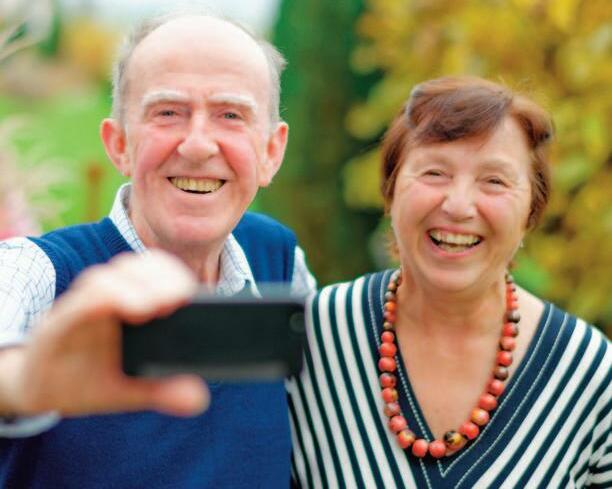
“The biggest thing now is social media,” says Roger. “I’m seeing more and more of it each week. Facebook, Instagram . . . residents are using social media to stay in touch with family.”
For those who don’t own a smartphone, tablet or laptop, ABHM provides access to computers so residents can use FaceTime or Skype with distant family members.


Over the last five or six years, the access and use of technology has become a routine part of daily life for residents and families. ABHM communities have Wi-Fi installed throughout all the common areas and in the health centers, networks for guests and visiting family to access, and walk-up computer stations are available in each community for those who don’t have a personal computer.
“People coming to our communities have grown accustomed to having access to technology,” says Roger. “It’s part of their lives.”
Seniors are living longer and more independently than ever before, however, with longer life comes an increased risk of developing Alzheimer’s or dementia. Sufferers of these diseases face a progressive decline in cognitive and physical capabilities, resulting in the gradual loss of independence and eventual need for intensive daily care. To meet the growing need, senior living communities all over the country have been adding additional facilities and services dedicated to memory care, making a clear difference in quality of life for seniors—and their family members.
When Mary Brockington – a resident at Trail Ridge’s sister community in Denver, CO, The Community at Franklin Park –was first diagnosed with Alzheimer’s, she still lived at home with her husband Fred. Initially her family took care of her at home, but eventually it became clear that she needed professional care.
According to her daughter, Caralynne, Mary had reached this point before moving to Franklin Park. “She would start packing everything and would start to try to go home—but she was home,” Caralynne describes. “She didn’t want anyone’s help, but we realized that it might start getting dan-

gerous and we wanted to keep her safe.”
A relative with memory loss can be a constant source of stress for family members, caregivers, and loved ones. Each day is fraught with communication challenges, difficulties performing routine tasks, and the risks associated with confusion and forgetfulness—such as the tendency to wander away and become lost.
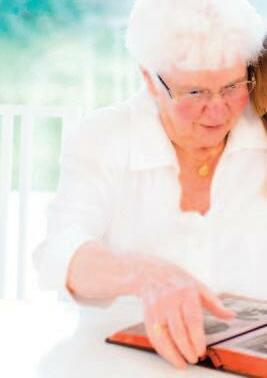
Before settling into Franklin Park, Mary first moved into another facility. However, it soon became clear that she required more advanced services than they could provide. Her family moved Mary to Franklin Park, where she has her own private room and receives one-on-one care from nursing staff.

The move to Franklin Park has been a wonderful experience for both Mary and her family members. “I try to visit every day,” Caralynne says, “but I call to check in on the days that I can’t go myself. The staff are diligent about keeping us posted on how she’s doing that day and her overall progress. They have all been very personable and seem dedicated to their work.”
Because social interaction plays an important part in managing the symptoms of Alzheimer’s, Franklin Park and the other ABHM communities provide extensive activities and programs designed to connect and engage with memory care residents. By keeping loved ones involved with favorite hobbies and activities, caregivers and family members can help them improve mood and memory—and possibly even slow the process of cognitive decline.
Mary, a lifelong social butterfly, is certainly seeing the benefits of staying active at Franklin Park. “During our visits we sit and talk, we sing songs, and we pray,” says Caralynne. “We choose our activities based on her mood, but we have been able to continue many of the activities she used to love. She’s been adjusting well to the community. She seems content.”
The support Franklin Park, Trail Ridge and all ABHM communities provide isn’t limited to residents. Caralynne and her family have been attending a monthly support group at Franklin Park throughout Mary’s time there. “Ever since she was first diagnosed, we have been going to seminars to learn more about the illness,” says Caralynne. “The speakers at Franklin Park have been really helpful in educating us about what has been going on with our mom. It makes our journey a little easier to understand what she’s experiencing.”
For more information about Trail Ridge Memory Care call Jason Honey at 605-339-4847.



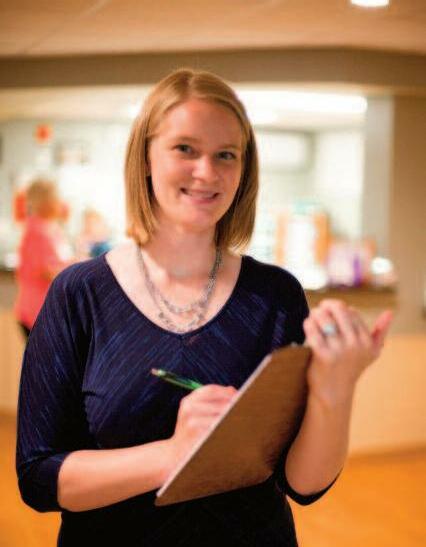


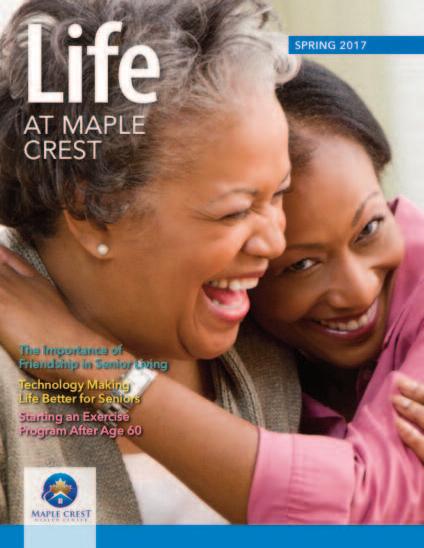
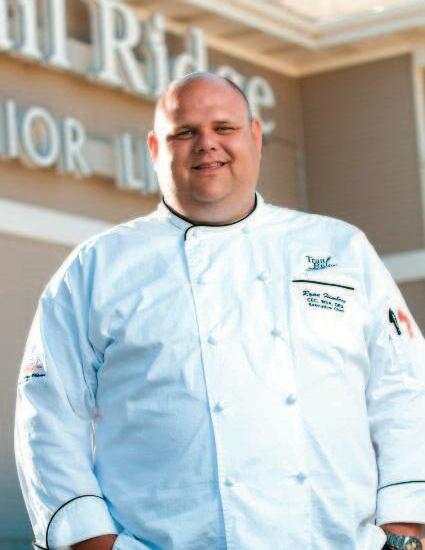


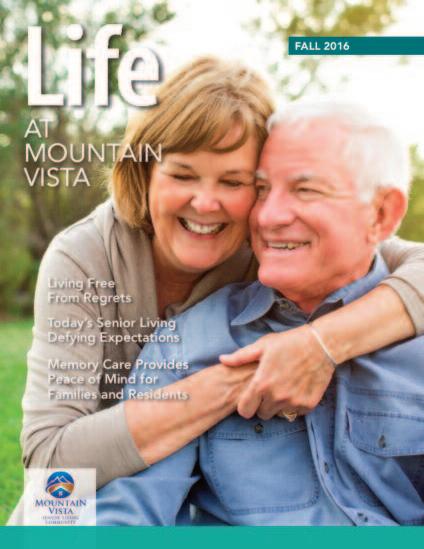



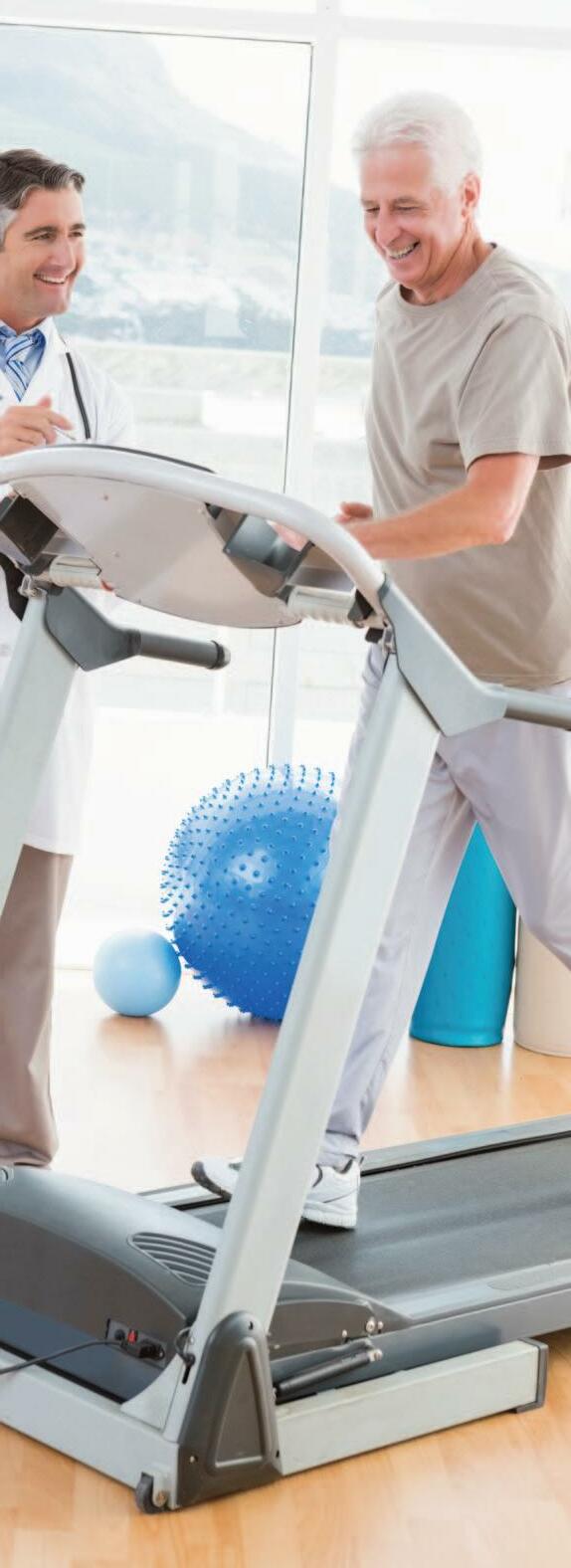
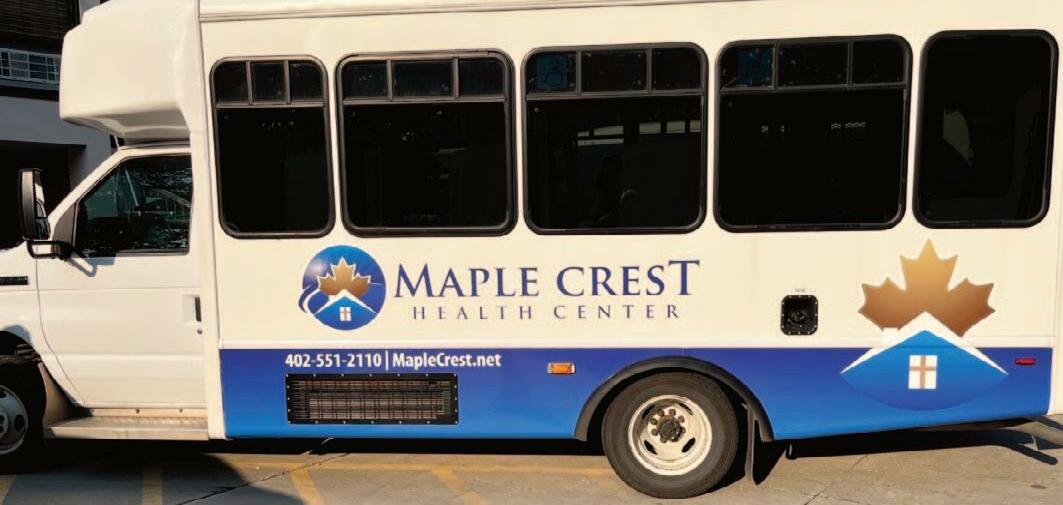
While working parttime as an Emergency Medical Technician (EMT), Pedro realized what he really wanted was a career in nursing. To reach his goal Pedro earned both his Certified Nursing Assistant (CNA) license and Certified Medical Assistant (CMA) license.
Two years later, Pedro is a vital member of the staff at Maple Crest Health Center, ABHM’s community in Omaha, Nebraska, where his next step is to become a Licensed Practical Nurse (LPN). For his LPN education, Pedro needed to go to nursing school which unfortunately, at the time, was financially out of reach.
When he applied to Metropolitan Community College in Omaha, Pedro was living at home with his parents and a young grandnephew, contributing part of his paycheck to help his mom and family with expenses. As a result, saving money for tuition was very difficult.
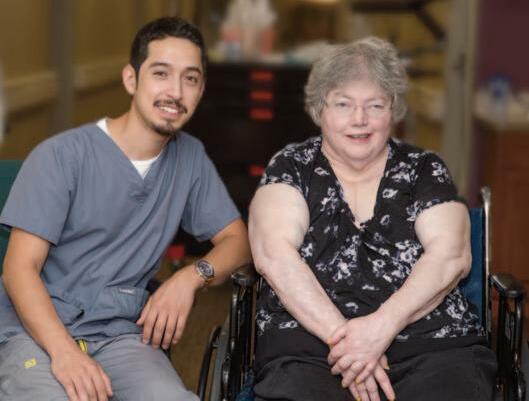
However, in February of 2017, Pedro applied for Maple Crest/ABHM Harold W. Kleinpaste Nursing Scholarship, a program that supports ABHM employees pursuing education in the nursing field. Several weeks later, Pedro was notified he had won the scholarship and he immediately started his LPN program.
Pedro said the scholarship has made pursuing his nursing degree possible. By reducing the financial pressures of continuing education, Pedro is able to balance work and school without sacrificing his studies.
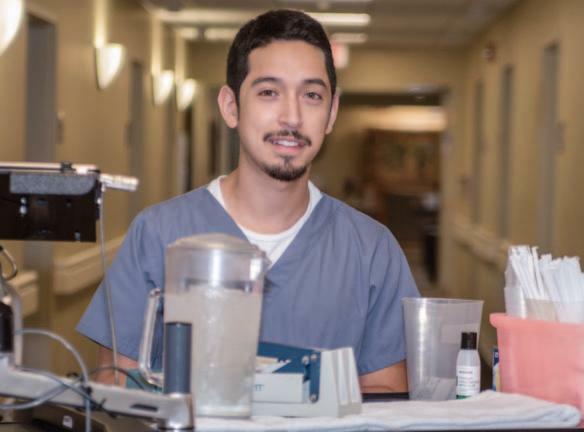
“Because of the scholarship,” he said, “I work less while in school and I can focus on my education.”
Pedro’s specific focus on nursing is a more recent development, but he’s wanted to go into medicine since he was a child. “I always wanted to be a doctor,” he said. “I was really eager to go into medicine. My mom encouraged me to do it because I liked to take care of people.”
As he grew older, his dream became more specific and he narrowed his focus from doctor to EMT to nurse. Pedro stated, “I learned about long-term care and realized there was a great opportunity to improve the quality of life for residents. That’s when I decided to go into long-term care, I wanted to be the person who made a difference in their lives.”
Getting his LPN license is just the next step in Pedro’s dream. After his finishes his LPN program, he plans to move on to a Bachelor of Science in Nursing, followed by a master’s in gerontology. Eventually he hopes to earn his Nurse Practitioner’s license, and he’s even given thought to pursuing a PhD.
There’s one dream that Pedro has already achieved: making a difference in the lives of people in long-term care. During his time at Maple Crest, Pedro has become a favorite among many of the residents. “There are some residents that ask for me specifically,” he said. “It can be
Pedro Perez is on the path to achieving his dream.Certified Nursing Assistant Pedro Perez, a 2017 Harold W. Kleinpaste Nursing Scholarship award winner from ABHM’s Maple Crest Health Center, located in Omaha, NE.
“I take pride in knowing that our residents care for me as much as I care for them,” says Pedro.

a lot of responsibility, but I like to take the time to help the residents and make a connection.”
“When I have extra time, I make sure to sit down with residents and just talk. I ask them about their leg, or how their week is going, those conversations really help improve their morale and cheer them up.”

Like all ABHM communities, Maple Crest Health Center’s Benson Hall nursing team strives to provide superior care to all of its residents.
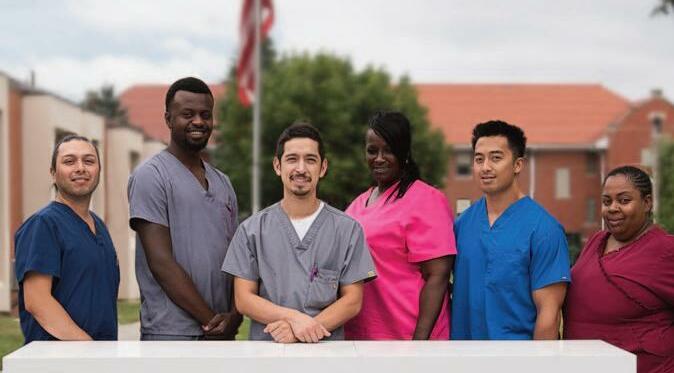
“I take pride in knowing that our residents care for me as much as I care for them,” says Pedro.
Embodying the Spirit of ABHM’s Mission
Pedro is as popular among the Maple Crest staff as he is
among the residents. His supervisor, Alison Stockamp, has nothing but positive things to say about Pedro and has him involved in the new employee Mentor Program.
Alison said, “Pedro has become an invaluable member of our team. Whether he is helping coworkers or providing therapeutic conversation to our residents, Pedro brings positivity and knowledge to each task.” She continues, “Pedro exemplifies the spirit of ABHM’s mission to create an environment that provides self-worth, hope, and dignity for all of our residents.”
Employees like Pedro make a difference in the lives of residents every day across all ABHM communities. If you or your loved one have been positively impacted by ABHM employees and would like to show your appreciation, we encourage you to donate to the ABHM Harold W. Kleinpaste Nursing Scholarship fund in your community. For more information, visit MountainVista.net/scholarship
in writing).
• Attends to all details of assignments and complete work properly, accurately, and thoroughly.




• Exercise sound judgment when making decisions and take prompt, decisive action; and
• Set priorities, schedule activities, acquire resources, and monitor progress to ensure the successful completion of projects and assignments.